
JunOS_2_routingessentials
.pdf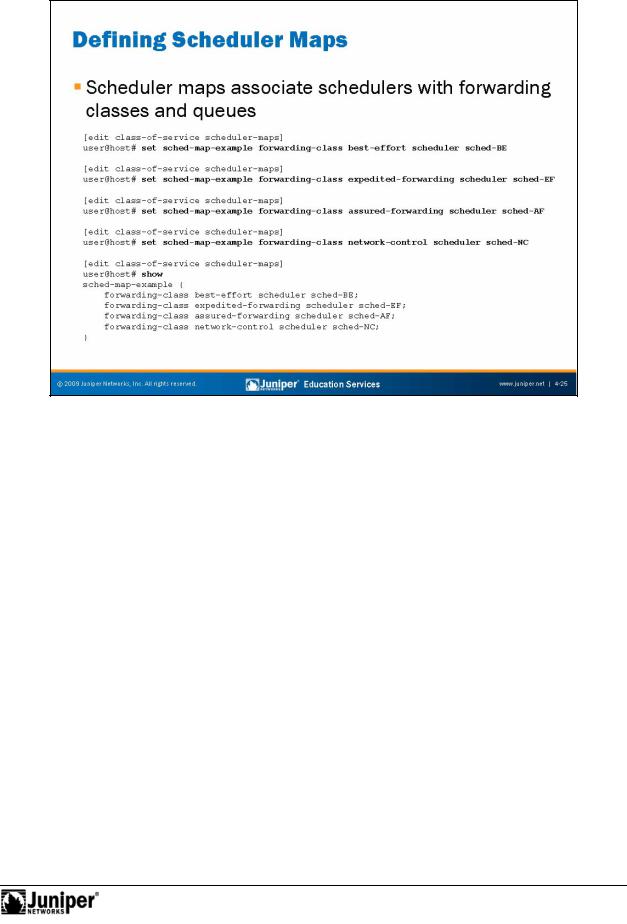
Not
JUNOS Routing Essentials
Creating SchReproductiondul Maps
Scheduler maps associate schedulers with particular forwarding classes and their respective queues. JUNOS Software references queues by the name of the forwarding classforassociated with them. You configure scheduler maps under the [edit class- -service scheduler-maps] hierarchy.
In the example on the slide, we associate four schedulers with the four default queues.
Class of Service • Chapter 4–25
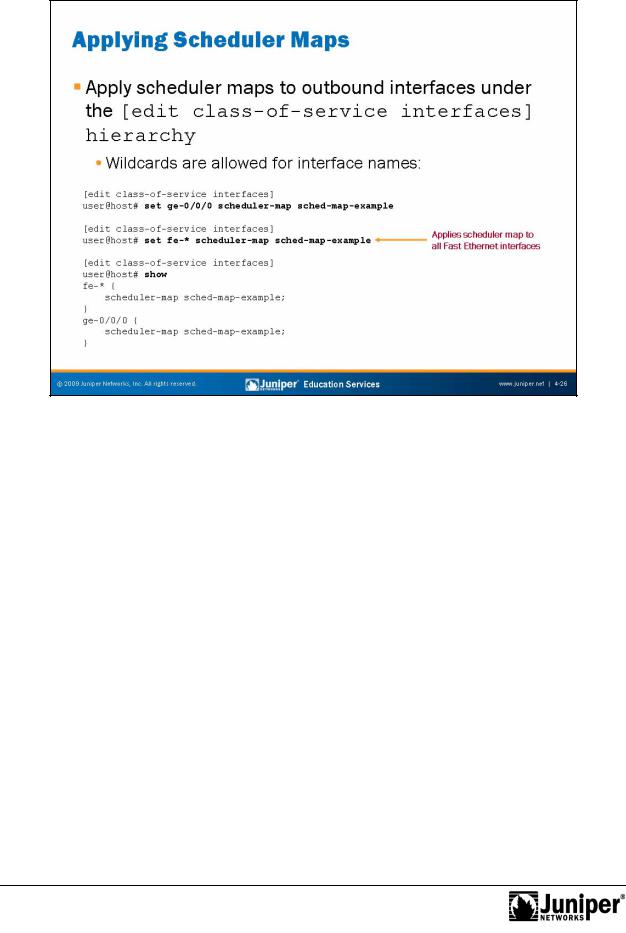
JUNOS Routing Essentials
Applying a SchedulerReproductionMap to an Interface
The final step in configuring a device running JUNOS Software to service its queues is to associate the scheduler map with an outbound interface. When packets arrive at the output inte face, the system places th packets in the appropriate queue for the forwarding class f the traffic. The system determines the order in which to transmit
packets m the queues by referring to the parameters configured in the scheduler associa ed with a given queue. The scheduler map tells the system which scheduler
for
Notshould be associated with each queue on a particular interface. You can use different scheduler maps on different interfaces to specify different scheduling parameters for queues n a per-interface basis.
The scheduler applies to all traffic across a physical interface unless you configure per-unit-scheduler for the interface under the [edit interfaces] hierarchy. In that case, the system schedules packets on a per-unit basis, and you can also define different scheduler maps for each unit. Support for per-unit schedulers varies between platforms running JUNOS Software.
Chapter 4–26 • Class of Service
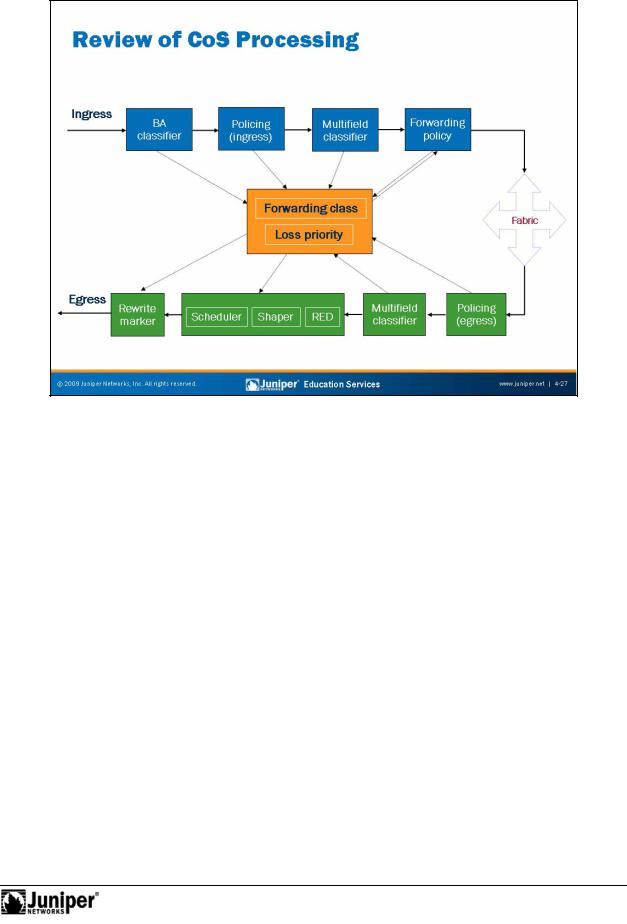
JUNOS Routing Essentials
Review of CoSReproductionProc ssing
We introduced the diagram shown the slide earlier in this chapter. Now that we forhave cove ed the concepts, we review the diagram to ensure that you understand how these concepts fit into the big picture.
Not
Class of Service • Chapter 4–27
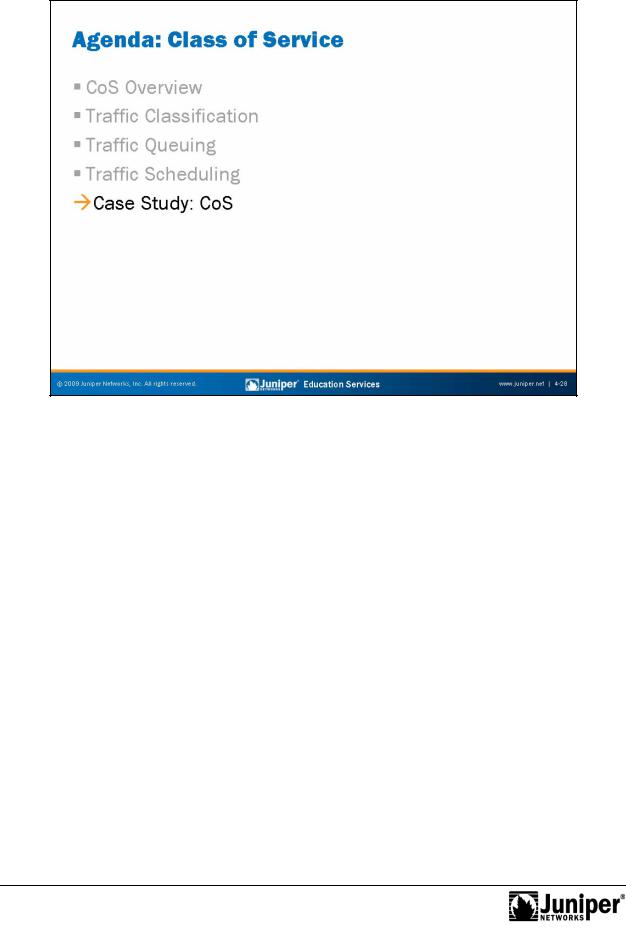
JUNOS Routing Essentials
Case Study: CoS |
|
|
The slide highlights the topic we discuss next. |
||
|
for |
Reproduction |
Not |
|
|
|
|
|
Chapter 4–28 • Class of Service
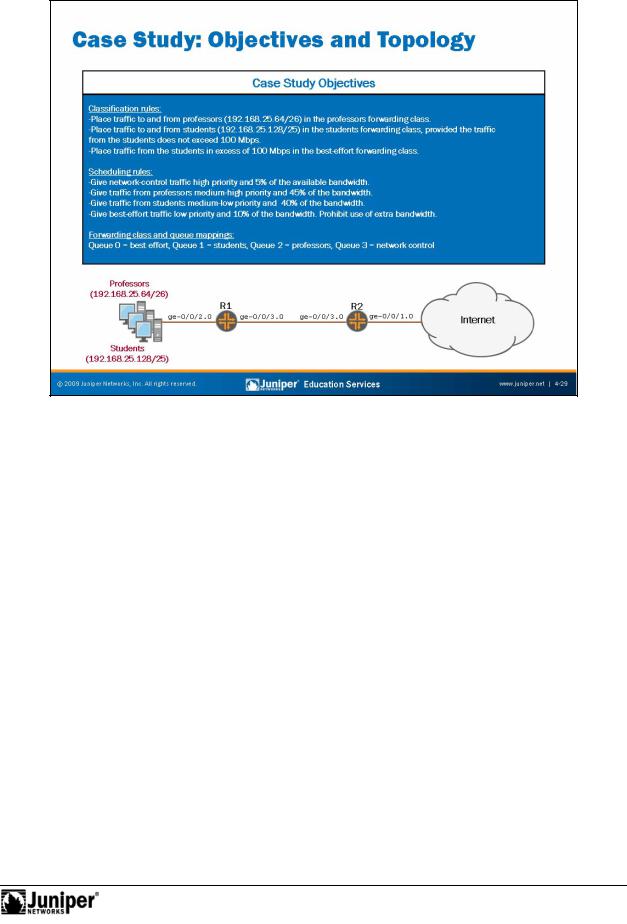
Not
JUNOS Routing Essentials
Objectives andReproductionTopology
The example the slide shows a fairly simple topology with an across-the-network CoS application. We show the traffic classification and scheduling rules, as well as the forwading classes and queue mappings.
F r simplicity, we use the same scheduling rules for all traffic on all interfaces. Note that nce traffic is associated with queues other than Queue 0 and Queue 3, you must con igure scheduler for those queues on all interfaces. Failure to do so might lead to serious performance problems for traffic that exits an interface through a queue that has no defined scheduler.
Remember that CoS support varies between platforms running JUNOS Software. In this example, R1 and R2 are J Series routers.
Class of Service • Chapter 4–29
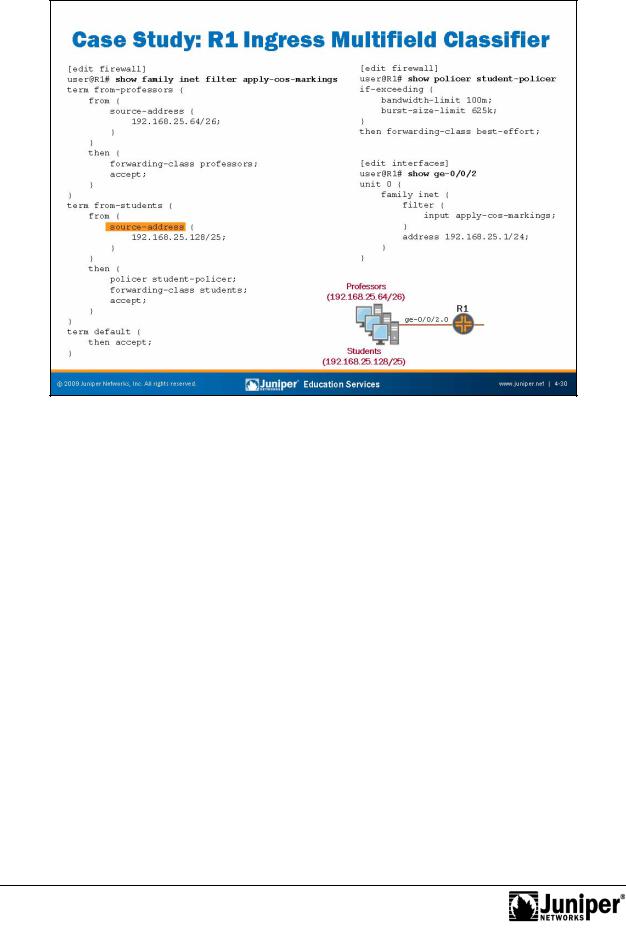
JUNOS Routing Essentials
R1 Ingress Multifield Classifi Configuration
The slide shows the configuration necessary to implement the defined classification |
||
rules on R1. |
Reproduction |
|
|
for |
|
Not |
|
|
|
|
|
Chapter 4–30 • Class of Service
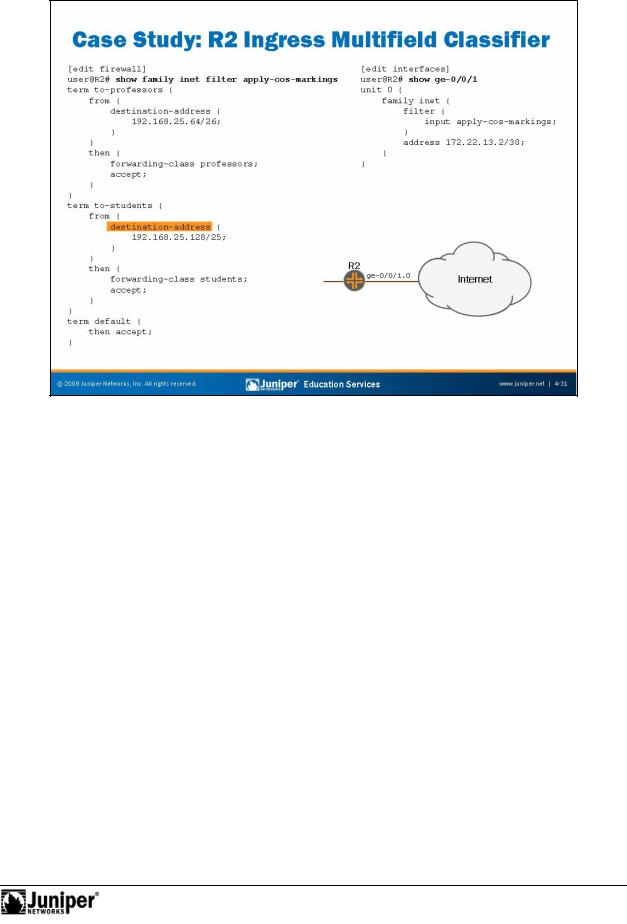
Not
JUNOS Routing Essentials
R2 Ingress ReproductionMultifi ld Classifier Configuration
The slide shows the configuration necessary to implement the specified classification
rules on R2. for
Class of Service • Chapter 4–31
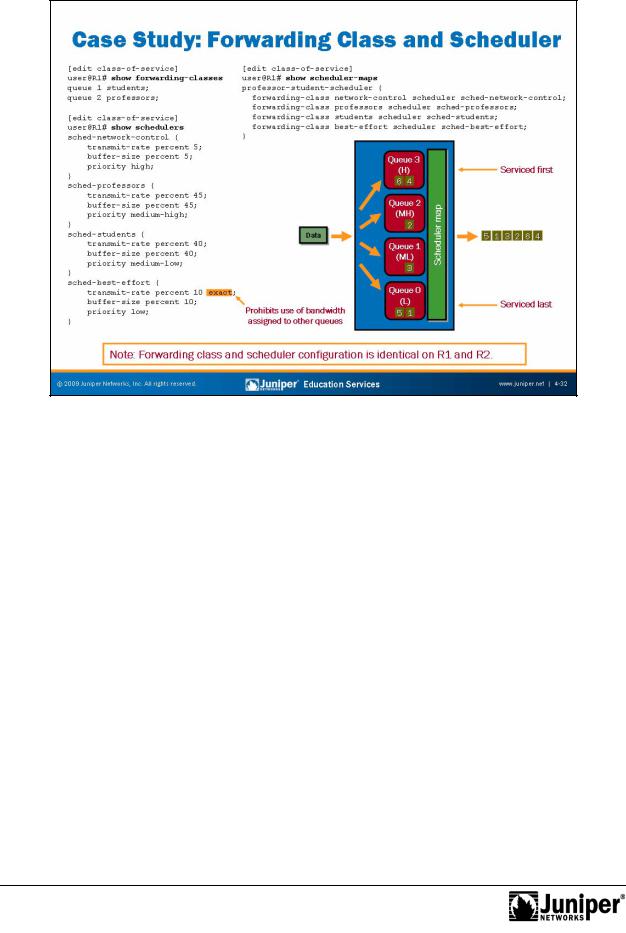
JUNOS Routing Essentials
Not |
for |
Reproduction |
|
Forwarding Class and Sch duler Configuration
The slide shows the forwarding class, scheduler, and scheduler map configuration (for both routers).
Chapter 4–32 • Class of Service
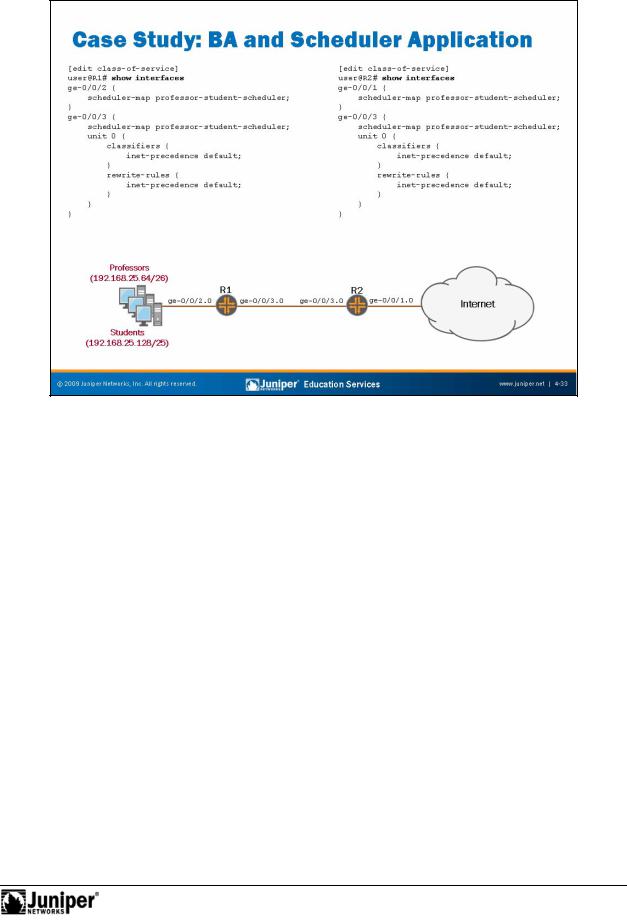
JUNOS Routing Essentials
BA and SchedulReproductionr Application
The slide shows the BA classifier and rewrit application as well as the scheduler map (forapplication both routers).
Not
Class of Service • Chapter 4–33
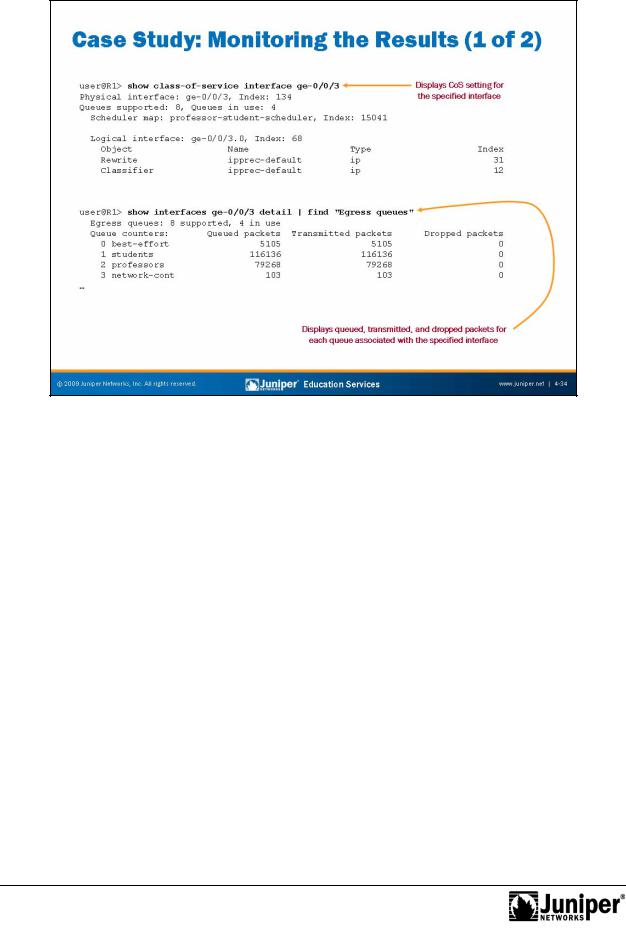
JUNOS Routing Essentials
Monitoring the Results: Part 1
You can quickly see most of the CoS configuration for an interface using the show
class-of-se |
vice interface interface command. This command |
|
displays the active configuration, including default values. You can use other show |
||
class- |
-se |
viceReproductioncommands to display details about various components of the |
CoS con igurati |
n. F r example, to see how the ipprec-default classifier maps |
|
the ype- |
-service field in the IP header to a forwarding classes, execute the show |
|
for
Notclass-of-service classifier name ipprec-default command.
One f the best ways to ensure that the CoS configuration is performing as expected is to ensure that traffic is placed into the expected queues on output. On most interfaces, you can see summary statistics for each queue using the show interfaces detail and show interfaces extensive commands. For some encapsulation types, these statistics are not available with this command.
Chapter 4–34 • Class of Service
